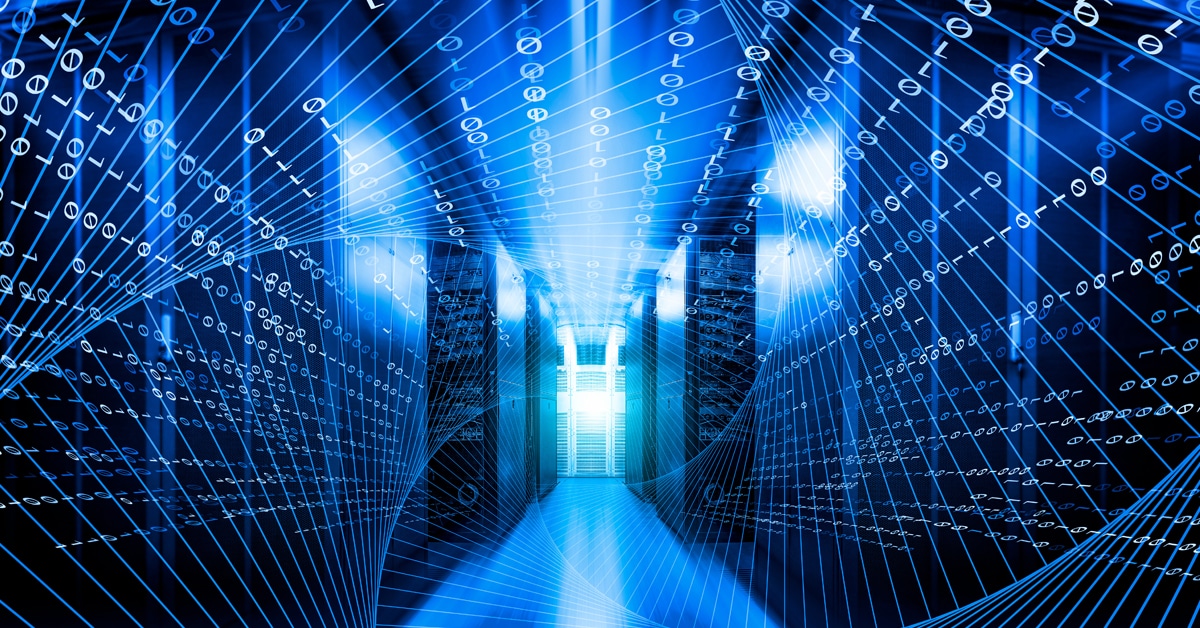Article by Gordon Johnson, Subzero Senior CFD Manager
The data center industry is, and will continue to be, in high demand for storage and process capabilities while at the same time facing increasing pressure to be more efficient, more secure and more scalable. This is where we see AI, the technology rapidly reshaping how we use our data, assisting us in our quest to be smarter, yet greener than ever.
While some say (perhaps correctly) that right now in 2024, AI is not as widespread as many would have us believe – AI is estimated to be in only 5% of data centers – the reality is that 20% of data centers are expected to have some kind of AI as early as 2026. The AI market is projected to reach US $407bn by 2027.
There is also much speculation on how to scale AI applications, so we’re seeing some data centers increasing their infrastructure to support future AI applications. In addition, some completed, or near-completed, designs are being revisited to support projected AI demand.
Operational Efficiency
AI’s predictive capabilities extend beyond maintenance to capacity planning, helping data centers anticipate and prepare for future demands, enabling efficient planning and scaling of operations to meet growing demand.
By providing insights into usage trends and capacity needs, AI assists in infrastructure management, planning upgrades and expansions, and ensuring data centers remain ahead of the curve.
AI helps improve Power Usage Effectiveness (PUE) by analyzing patterns and making real-time adjustments to power usage. This leads to more sustainable operations and reduces operational costs. Computational Fluid Dynamics (CFD) software capitalizes on this analysis, enabling the validation of a design or restructure to ensure you don’t have to deal with a worst-case scenario.
Energy Management
AI applications are escalating power consumption at the time we need to become greener and more sustainable. AI has the potential to be used to assist in operating data centers in a smarter and more energy-conscious way and, if designed and deployed correctly, could help us in our goal of a net zero data center.
AI-powered systems can dynamically adjust temperatures and airflow based on real-time data, optimizing cooling processes and significantly reducing energy consumption. Facilities that are specifically designed to run AI applications will be cooled predominantly with liquid cooling going forward. This trend will also impact COLOs since they’ll need to offer HPC and AI capabilities to stay competitive.
Data center designers and managers are doing their best to separate high and regular-density equipment within the whitespace to drive future efficiency. Rack densities, chips, servers, power consumption and heat levels are expected to increase with the demand that AI requirements place on them.
Cooling
It’s safe to say that because of AI, the future of IT cooling and thermal management is likely to be a hybrid solution comprising both air and liquid cooling technologies.
While we can expect rack densities to continue to increase, not everyone plans to deploy AI and ML (Machine Learning). Data center workloads show that air will still be useful for cooling ITE, it’s typically going to be HPC servers where it will continue to get more difficult if not impossible to cool with air alone. It’s also important to emphasize that not all ITE will be at the high end of the heat scale in the foreseeable future, meaning we’ll still be cooling the majority of ITE with air. Moving forward, we’ll need to find the balance in terms of efficiency, cost, and TCO (Total Cost of Ownership) when it comes to cooling options. Hybrid Cooling Infrastructure (air and liquid) is what we’ll be seeing more and more of moving forward.
The form of liquid cooling that is widely used is Direct-to-Chip (DTC)/Cold Plate liquid cooling. This technology uses a cooling fluid circulated through server CPUs and GPUs to absorb and dissipate heat. It is an effective way to cool AI ITE. DTC liquid cooling improves energy efficiency compared to traditional air cooling when deployed with high-density racks and can also reduce power utilization and overall water usage.
One important thing to consider is that DTC cooling only removes up to 70-75% of the heat generated by the ITE rack, leaving 25-30% that still needs to be removed by traditional air-cooling systems. Right now, the industry appears to be adopting DTC quicker than other forms of liquid cooling. This may or may not change, but once again this shows that air-cooling in our data centers is still needed and is not going away. We can expect to see its infrastructure continue to grow and be around for years to come.
Conclusion
AI is profoundly impacting the data center industry in several ways, modifying how data centers are designed, managed and operated. AI brings unprecedented levels of efficiency, security and scalability and, by using this technology, data centers can meet today’s growing demands while reducing costs and environmental impact. As AI technology continues to advance, its transformative effects on data centers will herald a new era of smart, sustainable, and resilient digital infrastructure.
AI is not just a tool for incremental improvements; it addresses the challenges faced by the data industry to reduce its carbon footprint, improve sustainability and bring us closer to net zero. As data volumes continue to climb, the integration of AI will become even more critical for the data center industry.



